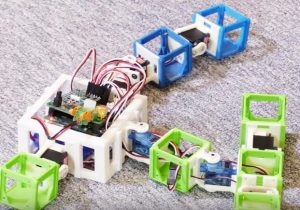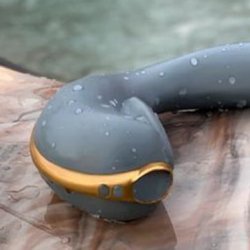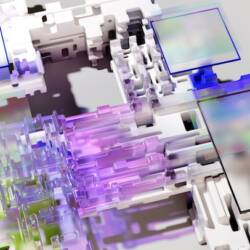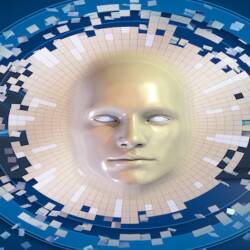Mating Robots 3D Print Their Babies After Exchanging Genomes
Machines procreate in groundbreaking evolutionary robotics project.
 |
Dutch artificial intelligence researcher Guszti Eiben has developed robots that can procreate. The first pair of robots to demonstrate this are of modular, 3D-printed design: one is shaped like a four-legged, blue spider and the other a green gecko.
Red light dating
Before the robots begin their unique reproduction process, they go through a digital courtship. This involves the robots walking in close proximity to each other, exchanging their information via WiFi and ultimately deciding if they want to mate. The researchers involved in this project explain that this dating and mating process is reflective of an evolutionary system.
“We want to make robots smarter by using evolutionary processes,” Eiben said in a video made by Vrije Universiteit Amsterdam, the Dutch university where this project was developed.
PhD student Jacqueline Heineman also explained that fitness is one of these processes. “The better their fitness, the more chance they have of reproducing,” she said.
The robots date in accordance with a red light motivator. They are programmed in such a way that they are motivated to walk toward a red light. Once they are in the space of the red light, they can communicate and mate.
Mating season
Once the robots evaluate each other favourably, procreation begins. Although they are in close proximity to one another, they don’t have physical sex, other than accidentally walking into one another. Their mating process takes place on digital networks using WiFi.
Each robot has its own genome code, which they send across a WiFi network to what the developers have called the Birth Clinic, otherwise known as a 3D printer. The genomes are then rearranged to create a third genome, which is used to build a new robot.
 |
It’s a…robot!
The first robot baby was born on February 19, 2016, from its parents the blue spider and the green gecko. It has both blue and green components and is different from each of its parents. At this stage, the modular robot parts can be 3D printed but still need to be assembled by humans. Technology and moving parts cannot be printed as of yet.
Kill switch
This leap in the artificial intelligent life forms could cause concern for people who fear AI’s may take over the world. Eiben reassured the public by including a kill switch for this project. The kill switch looks less like a big red button and more like the off-switch for the Birth Clinic, a.k.a the 3D printers. Turning off the printers would stop the creation of more robot babies. They could still have virtual sex, but there would be no procreation involved.
Future of robot babies
As the robots continue to evolve “they [will] become better and better over time”, Heineman said. This project proves the concept of evolution in robots as physical hardware is possible. Robot babies could encourage the study of evolution through new tangible life forms.
Eiben believes another use for the robot baby evolution is to develop the technology in such a way that it is applicable to robots or rovers on Mars. The space robots would then be able to redesign themselves if they run into any problems.
Image source: Vrije Universiteit Science, sciencefreak
Leave a reply
You must be logged in to post a comment.

















